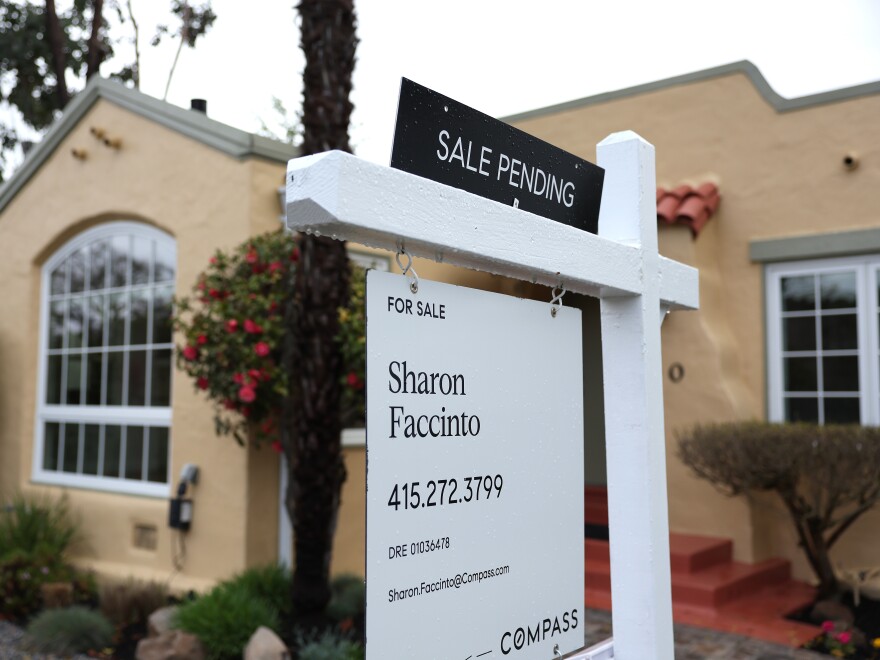In spite of the housing market’s ongoing post-pandemic decline, home prices reached an all-time high in June.
According to data from the National Association of Realtors, the median price of an existing home sold this month was $435,300, surpassing the previous high, which was established in June 2024. However, seasonally adjusted sales figures were at a nine-month low overall. June sales were 2.7% lower than the previous month.
Given how slow the market is, how can prices be so high?
“There are a lot of haves and have-nots in the housing market right now,” says Jessica Lautz, the National Association of Realtors’ deputy chief economist.
Some people do have a lot of money to spend, but many potential buyers are still on the sidelines. The stock market is reaching all-time highs, wages are continuing to rise, and those who have a house to sell can use the proceeds to purchase their next one.
“Right now, people with housing equity are able to make housing transactions. Even with an all-cash purchase, many of them are doing so, according to Lautz. “They have the ability to interact with today’s housing market, where first-time homebuyers are being shut out.”
It’s loading…
The housing market is strongest at the top
The top end is currently the market’s strongest segment. The largest increase in sales last month was for homes exceeding $1 million, which increased 14% from a year ago. More properties are now over a million dollars as prices continue to rise. According to a Redfin real estate brokerage analysis last year, 8.5% of homes in the United States were valued at $1 million or more.
It also shows who is currently purchasing. Last month, 29% of sales were done by all-cash buyers.
But for middle-class and first-time purchasers, the market can be confusing. Even if the rate of increase in property prices has decreased, the median price has increased by 48% in just five years.
After saving for years or getting assistance from family, some people are taking the risk and simply paying a high price for a home. Last month, 30% of purchases were made by first-time purchasers.
Many others would also like to purchase a home at this time, but they are just unable to do so.
Many buyers are deterred by high mortgage rates
Though inventory is still lower than it was before the outbreak, there are noticeably more properties for sale than there were a year ago.
Additionally, high mortgage rates—which currently average 6.74%—are deterring potential purchasers. These high rates combined with high prices make it impossible for people attempting to enter the market and purchase their first house to make the numbers work. A monthly payment can increase by hundreds of dollars for every percentage of interest.
“It is pricing out buyers,” Lautz claims. She goes on to say that mortgage rates are also deterring people from selling: “We also know the lock-in effect is real.” Unless they have a significant amount of home equity, those with lower-interest mortgages just aren’t willing to make this move at this time.”
Paradoxically, lowering mortgage rates as many would prefer will increase demand and would likely drive up property values even further.
In that scenario, “many individuals who have been marginalized and are unable to pay for today’s market will reappear.” And it will be very challenging for someone attempting to enter the market as a first-time purchaser to be able to compete,” Lautz adds.
Home prices aren’t up everywhere
Redfin looks at property prices using a different methodology than the National Association of Realtors. It compares the price at which a home sold recently with the price at which it sold in the past.
Using that data, researchers observed price drops in 30 of 50 metro areas, with the largest drops occurring in San Diego, Austin, Texas, and Washington, D.C.
Marshall Park, Redfin’s senior market manager in the D.C. metro region, stated in a web post that the federal employment losses are only one reason for the drop in D.C. It’s not only layoffs, though. As rising mortgage rates compel purchasers to reconsider what is affordable, we’re also witnessing indications of price sensitivity.
New homes can be cheaper than old ones
In contrast, new-home sales last month were down over 7% from a year ago but up little from May. These figures, according to Wells Fargo analysts, show “weak buyer demand resulting from challenging affordability conditions and heightened economic uncertainty.”
In terms of cost, new residences were once more costly than older ones. However, that is no longer a guarantee.
Last month, a new single-family home sold for a median price of $401,800. over $40,000 less than the average single-family home now on the market.
This is due to multiple factors: In order to satisfy the enormous demand for starter homes, homebuilders are now constructing smaller homes. When it comes to location, existing homes could be advantageous. Additionally, home builders are somewhat free to lower prices to entice purchasers:In July, 38% of builders reported lowering prices, the most percentage since the National Association of Home Builders started keeping track of the number in 2022.
However, building new homes is becoming more costly due to the same interest rates that are keeping mortgage rates high. Permits for new construction fell to more than a two-year low in June, while single-family home starts fell to an 11-month low.
The impact on supply will have a negative impact on house prices in the upcoming months and years.
Copyright 2025 NPR






